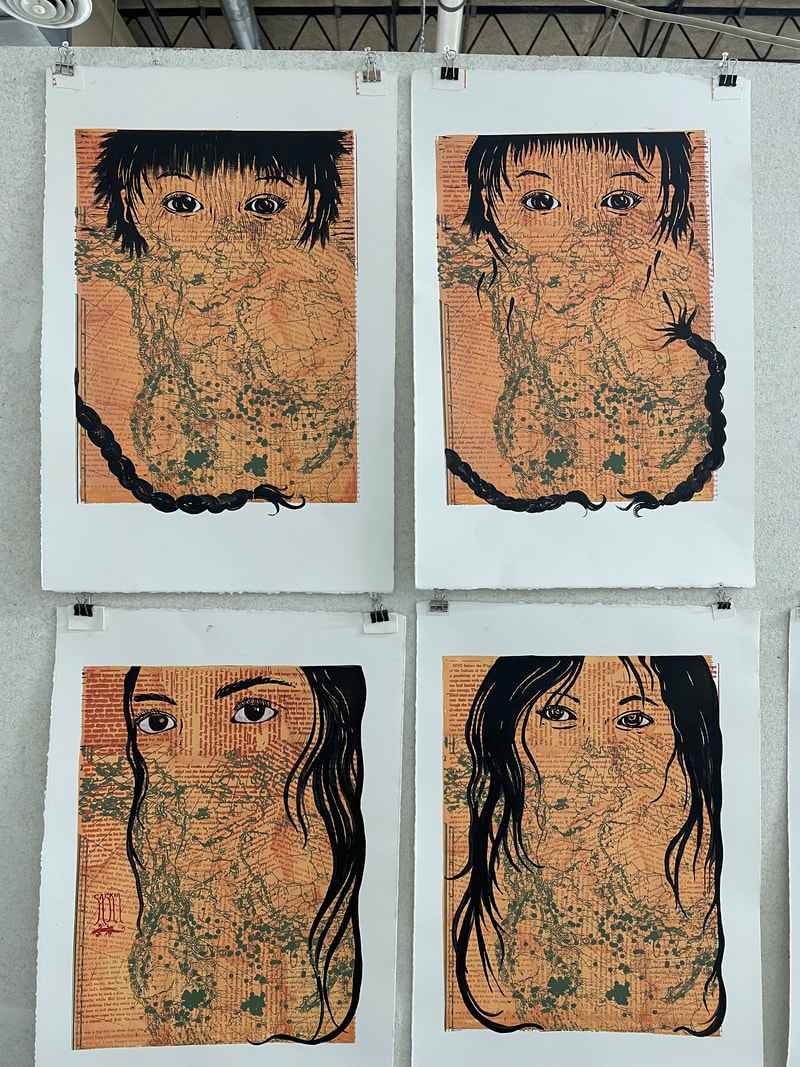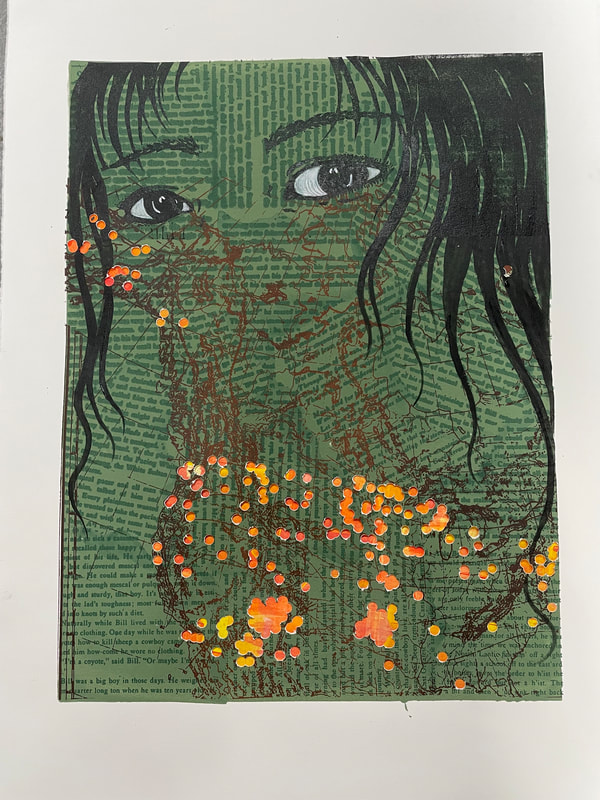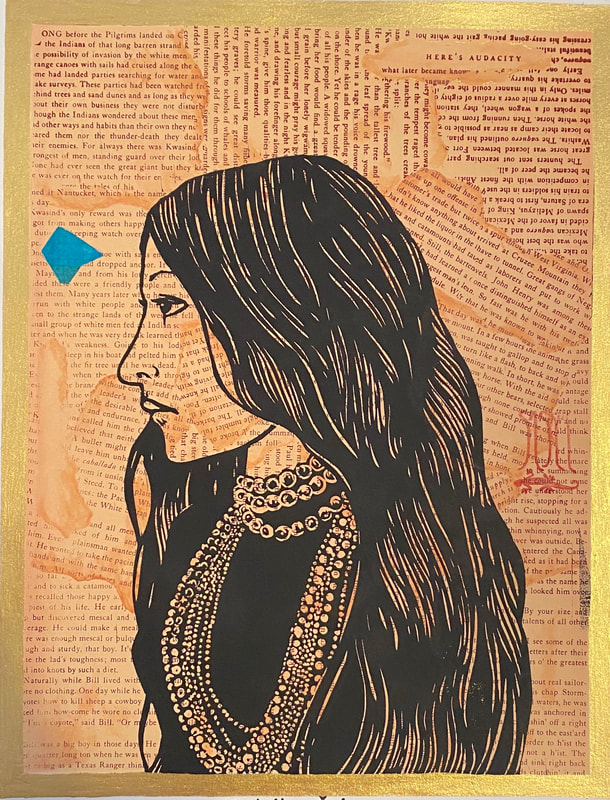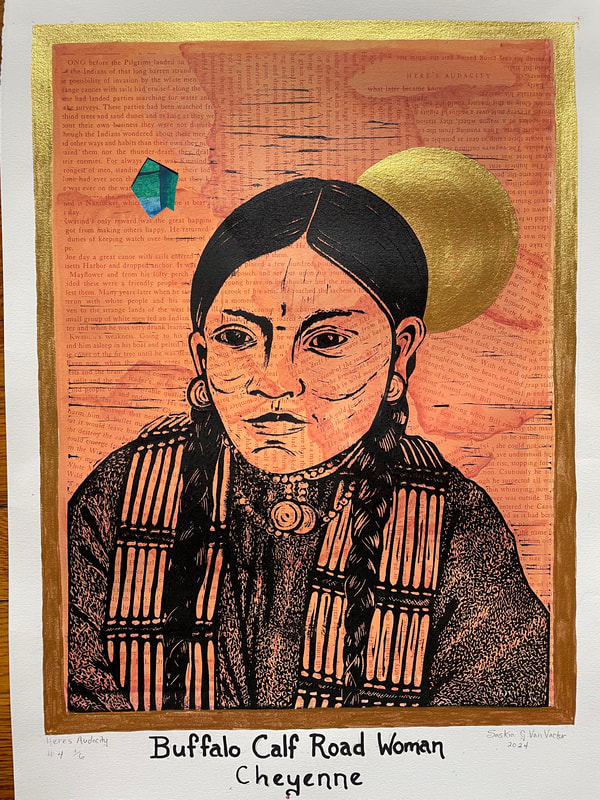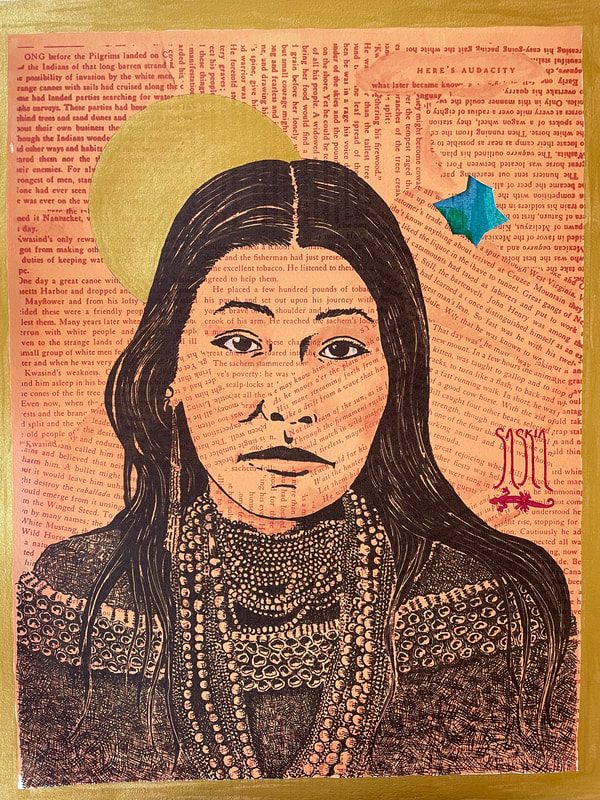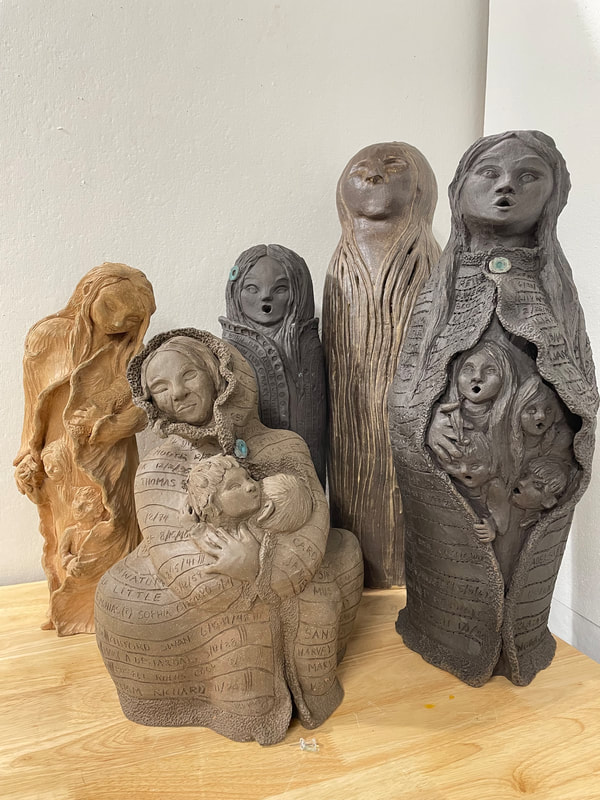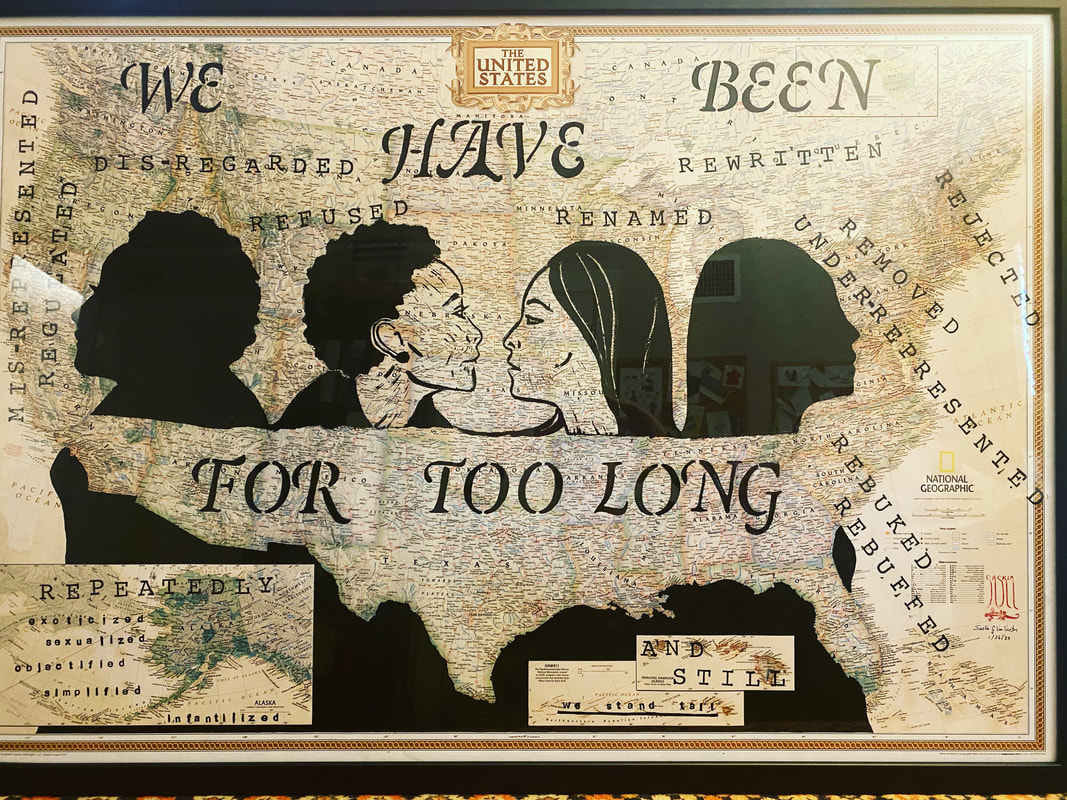Indigenous Awareness
women and children
- This is the beginning of a series around the U.S. Residential Schools which I hope to bring awareness to the public addressing this issue through art. Indigenous children were forced to go to these schools, "to kill the Indian, save the man." These schools ran from 1860 up until the last one closed in 1978. Children were forced to abandon their language, beliefs, heritage and culture. their hair was chopped, their traditional clothing burned. It was a place where many endured physical, sexual and mental abuse And it wasn't that long ago.
- A series of portraits of inspiring and truly amazing indigenous women, who should be celebrated but are instead mainly unknown because they are Indigenous and because they are women, particularly women of color in the United States
- This project is multi media involving work in clay, fabric and printmaking
- Block print on silkscreen background
The text is a silkscreened collage made up from Here's Audacity, written by Frank Shay and illustrated by my grandfather, Eben Given. This book is a series of tales about inspiring and amazing men who lived audaciously. I chose this as my background to represent the stories that are told again and again that have become the background of our society and history. This project is to bring to the forefront the images of remarkable indigenous women whose stories are seldom told but who should be celebrated and stiudied.
The blue, cut out section represents two things:
1. the holes in our history. Whose stories get told and whose do not
2. It represents a space to let the energy and spirit flow freely through.

